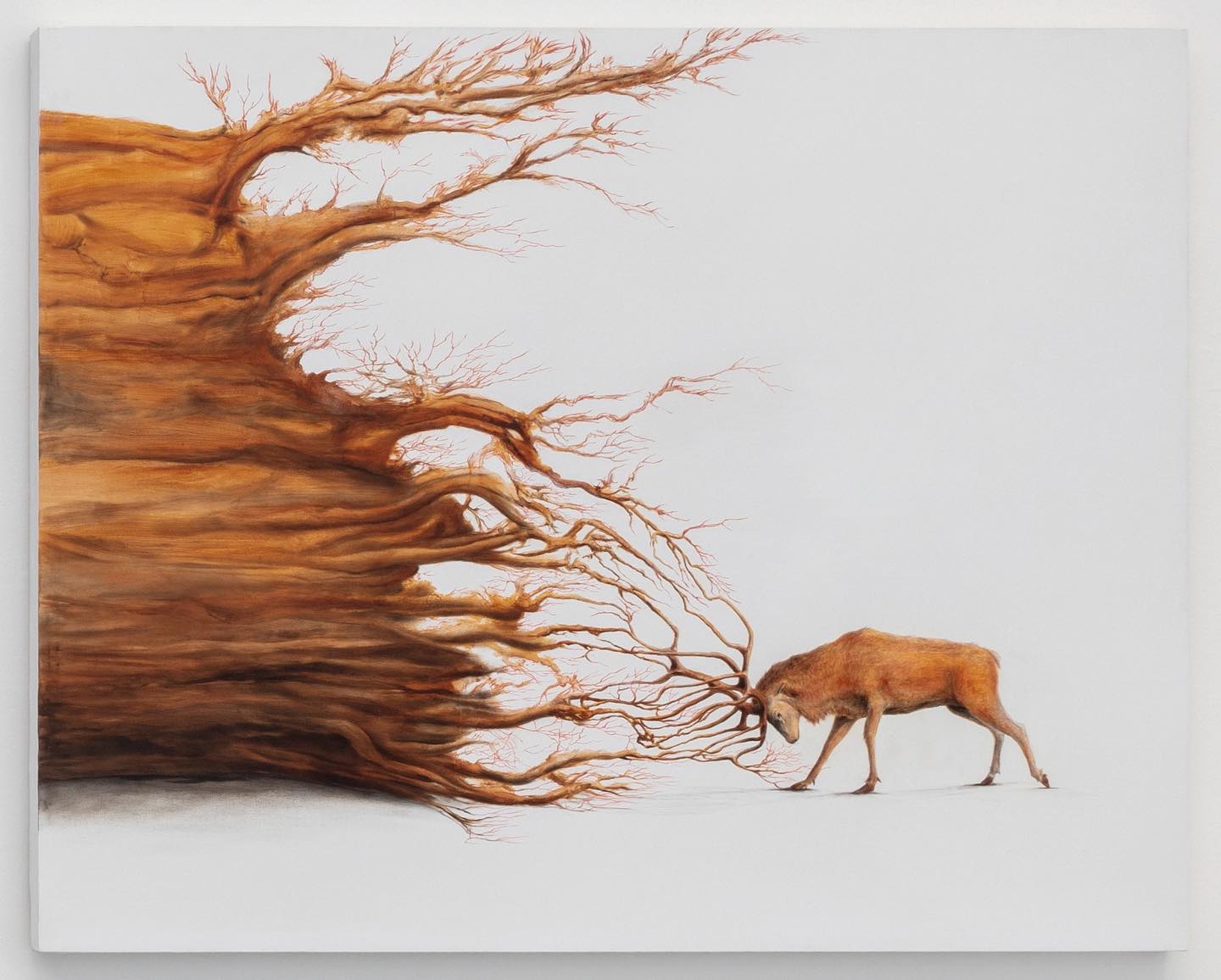The world described by Simone Berti in his works is a mythical, enchanted, mysterious world of nature. Almost sacred. A myth made of harmony. And of graphic skill. Described in moments and details that are part of a more articulated story. A story almost lost. However, yet this time rediscovered. In other words, always full of surprises.
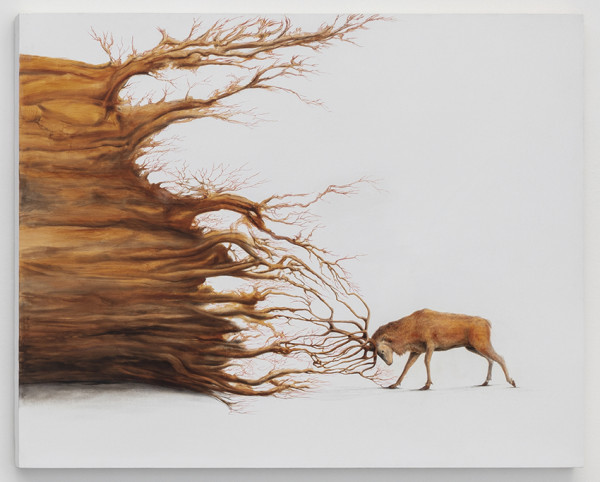
Above all trees
A nature where trees, in their different forms, are the protagonists (non-solitary) of a populated nature. Crowded with living creatures.
Berti’s creatures dig into his/our fantasy. They seem to come out of some medieval fairy tale. Or from a retro-futuristic vision. Or neo-primitive.
A tale in which a mountain can be, miraculously, suspended on top of a giant structure. Dames without knights can wear hats as grand as palaces. Artist friends can let themselves be portrayed together with their most famous work as prostheses of flowering plants. They are true heraldic signs for modern times.
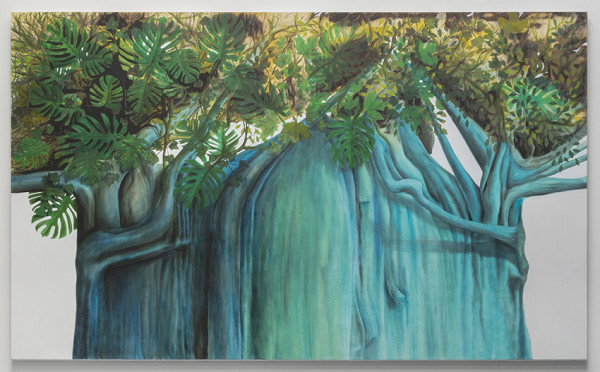
Icons of the planet’s history
In this exhibit, the large series of trees come in different shapes and colors. They seem, in addition, icons. For instance, of another point of view of the history of the planet. A mythical and fantastic viewpoint.
Brings to mind the words of Italo Calvino. When, in the introduction to Fiabe Italiane, he speaks of: “…unitary substance of the whole, men, beasts, plants, things. The infinite possibility of metamorphosis of what exists”. (Italo Calvino, Introduzione alle Fiabe Italiane, Mondadori, Milan 1991, p. xvi.)
The space of nature and man overlap (once again) in a universe. That does not seem to allow the division of species and categories. What before we can define as taxonomy, now belongs to an indivisible whole.
The horns of animals, for example, conquer the air. But hinder their eventual agile movements. Finally, they even become roots. And, after that, still horns.
It is a concept of nature that you should get to accustom. However, at once unusual and fascinating. It conceals a circular time. Almost an eternal return. As opposed to the linear time of contemporary progress.
Trees and nature have become the protagonists of Simone Berti’s recent artistic work. Tree trunks are depicted in all their muscularity. As hybrids, at least as reminiscence, to zoological body forms.
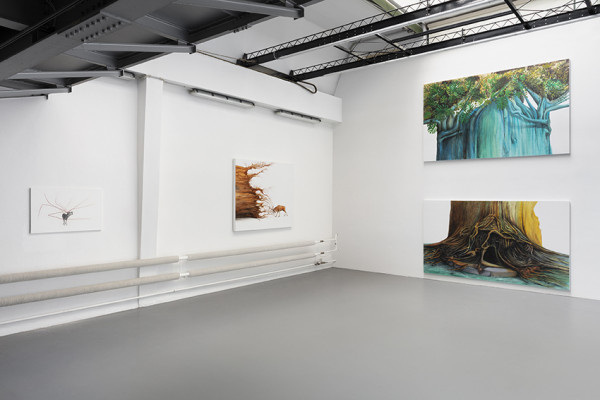
Simone Berti
Simone Berti, born in Adria (on the river Po); after attending the Academy of Fine Arts in Milan, in the ’90s he lives with other artists including Stefania Galegati, Sarah Ciriacì in the stable of Via Fiuggi 12/7, forming the homonymous group. He has exhibitions in important international structures such as the Kunstmuseum in Bonn, and numerous Italian galleries. Including the Galleria Massimo de Carlo in Milan. Pupil of Kosuth at the Ratti Foundation, of Garutti at Brera and winner of the prize for young art at the Rebaudengo Foundation in 1997. He has also exhibited his works at the Birnabaum Biennial, at the Centre Pompidou, at the Istanbul Biennial and at Whitechapel. Refined painter, photographer, designer, sculptor and performer. After a short period in New York, in 2008 he moved to Berlin.
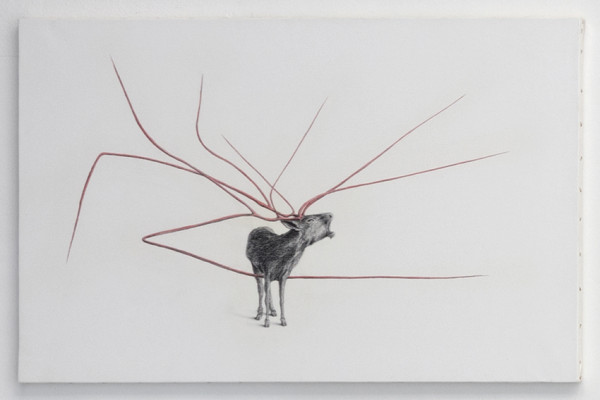
Trees firmly rooted to the ground
His are the images of people, animals and objects suspended on prostheses. Scaffolding and stilts burst with ineffable lightness into the collective imagination of the Italian art scene in the late nineties. Installations and paintings that evoked nineteenth-century herbarium illustrations. But reread by mercilessly emphasizing all the fragility, instability and disabilities of the subjects depicted.
The most recent discovery is that of new protagonists of the research: trees (hence the title of the exhibition). Trees that take root and branch out firmly to the ground. They making a grip on the earth.
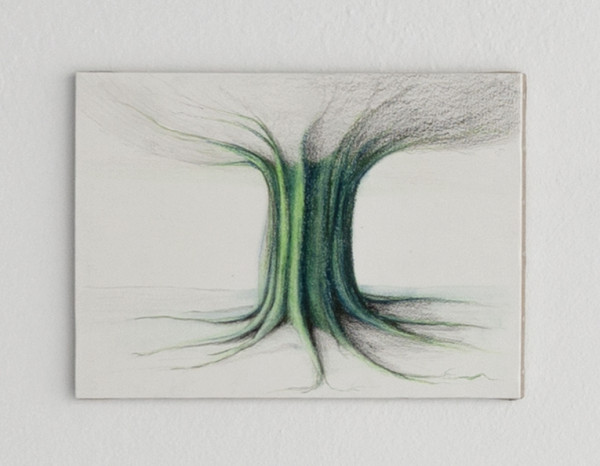
Metamorphic universe
A metamorphic universe (as Luca Cerizza points out in the introductory text). Referring to a mythical, and primordial, unitary substance of everything.
It is that myth of which Jacques Brosse also speaks in his book “Mythology of Trees”. A distant past: “…long before man appeared on earth, a gigantic tree rose up to the sky. Axis of the universe, it crossed the three worlds. Its roots sank into the subterranean abysses, its branches reached the empyrean”.
Since ancient times, in fact, trees have been at the center of a fascinating system of myths and legends. In an astonishing course of centuries, historical and cultural factors have led plants to be considered manifestations par excellence of divinity. From the glorious myth of the Cosmic Tree. To the cult of oaks among the Greeks and Romans, to the Garden of Eden in Christianity, to the sacred fig tree under which the Buddha reached enlightenment.
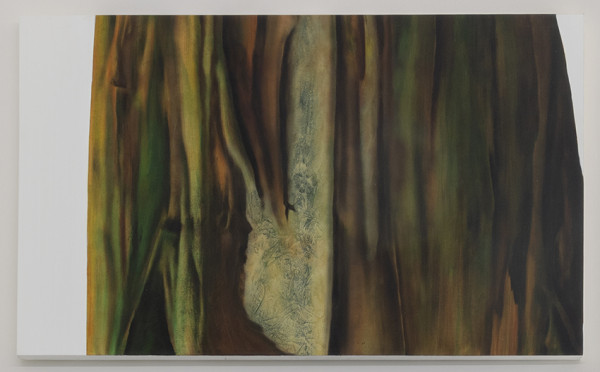
Alternatives to the mainstream
“Taking them together, however, these creatures could certainly be read as moments and details of a more articulated story, of a coherent imaginative vision.” Luca Cerizza (curator of the exhibition) adds. “Saturated with a popular culture embodied in bodies extraneous to any homogenization. Narrative models such as the fairytale, the nursery rhyme, the legend, were put back into circulation. With the potential critical goal of creating a space “protected” from the fast-moving flow of modernity. To make them stories standing as alternatives to the mainstream.
Through forms of folk tales, they transmit situations of symbolic, mythical cores. That seem to inhabit an immemorial time.”
Infinite metamorphoses
“The painting never thickens” says the critic Alberto Mugnaini, “…the chromatic paste caresses the canvas without lumps or material stumbling. Berti’s brush seems to proceed at a very slow pace, almost mimicking the same growth times of the tree, the patient chronology of all its infinite metamorphoses. Metamorphoses that also extend to animal life; involving it in a single germination process. In the Untitled of 2020 the coppermarks of the deer’s antlers are grafted and grow with the appendages of the trees. As if all of nature were nothing more than a massing and crossing of wooden fragments”.
Parables of the present
Berti understood from the beginning that we should be suspicious of this modernity. Of its desire to exalt the anthropic over the animal, the human over the vegetable.
What seemed like tales of a bygone era are, in reality, parables of the present and the time to come.
A superior degree of ecological awareness. Berti gives us back all the fascination of a world only apparently forgotten. Instead, it illuminates with the depth of a multi-millennial wisdom; that that bases itself on incredible knowledge. And knows how to harmonize human expressions with the balances and rhythms of nature.
Read more: Galleria Schiavo Zoppelli
May you also be interested in: Olafur Eliasson arrives in Italy


